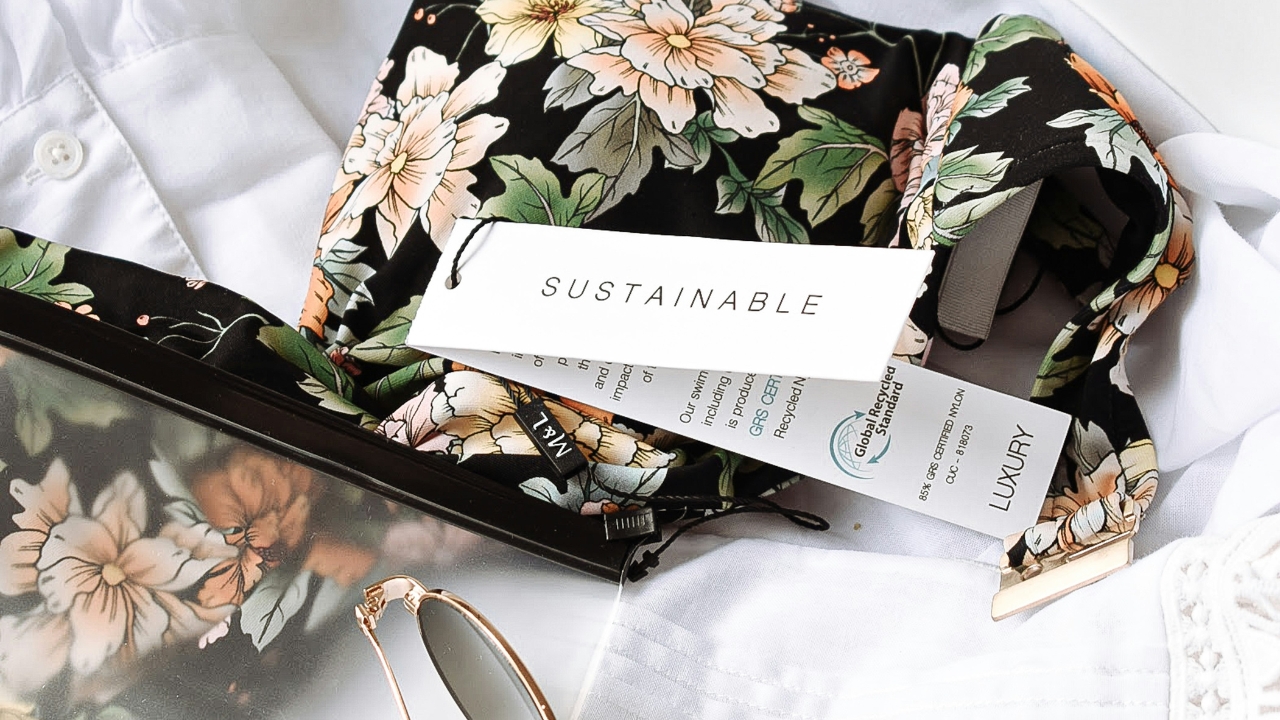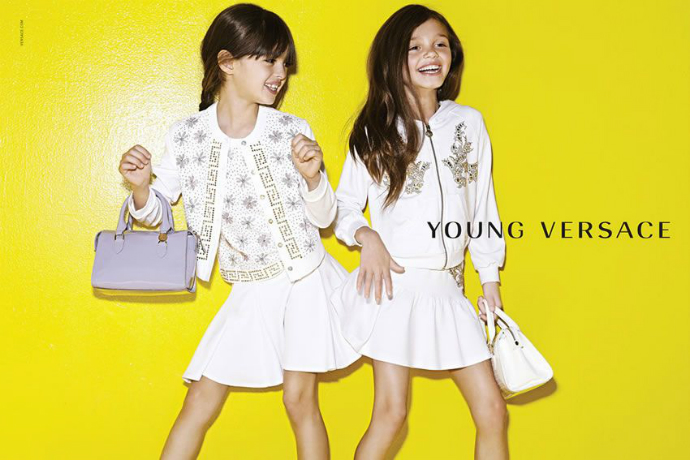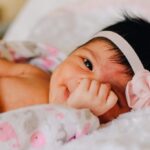Explore eco-friendly and ethical kids’ fashion brands like Mini Rodini and Frugi. These brands prioritize sustainability and fair labor practices.
The fashion industry is undergoing a significant shift toward sustainability, especially in kids’ clothing. Parents increasingly seek brands that reflect their values, prioritizing eco-friendliness and ethical production. Children’s fashion can be stylish without compromising the planet or the welfare of workers.
Numerous brands now offer collections made from organic materials and recycled fabrics. By choosing sustainable options, parents not only dress their kids in trendy styles but also contribute to a healthier environment. This article highlights some standout brands committed to making a positive impact in the world of children’s fashion, ensuring that style and ethics go hand in hand.
Table of Contents
The Rise Of Green Threads
The fashion world is embracing a new trend. Eco-friendly and ethical kids’ fashion brands are gaining popularity. Parents want stylish, safe, and sustainable clothing for their children. This shift reflects a larger commitment to the planet. Kids deserve clothes that are kind to the Earth.
Sustainability In Children’s Wear
Sustainability is becoming essential in children’s fashion. Brands focus on using organic materials. These materials are free from harmful chemicals. Here are some key aspects of sustainable children’s wear:
- Organic Cotton: Grown without pesticides.
- Recycled Fabrics: Reduces waste and energy use.
- Water Conservation: Less water used in production.
- Durable Design: Clothes made to last longer.
More brands aim to create eco-friendly collections. This helps reduce the carbon footprint. Parents can feel good about their purchases.
Ethical Fashion’s Youngest Consumers
Kids today are aware of their choices. They care about the environment. Many brands are now targeting these young consumers. They focus on ethical practices. Here are some reasons why ethical fashion matters:
- Child Labor: Ethical brands ensure fair labor practices.
- Animal Welfare: No harm to animals in production.
- Community Support: Brands often support local artisans.
Kids want to wear clothes that tell a story. They prefer brands that align with their values. This trend is shaping the future of fashion.
Materials Matter
Choosing the right materials is key in eco-friendly kids’ fashion. Sustainable fabrics protect the planet and support ethical practices. Parents want safe, comfortable clothing for their children. Eco-friendly brands focus on quality over quantity.
Organic Cotton Versus Conventional
Organic cotton is a popular choice for kids’ clothes. It offers many benefits over conventional cotton.
| Feature | Organic Cotton | Conventional Cotton |
|---|---|---|
| Farming Practices | No synthetic pesticides or fertilizers | Uses harmful chemicals |
| Soil Health | Improves soil quality | Depletes soil nutrients |
| Water Usage | Less water needed | High water consumption |
| Health Impact | Safer for kids’ skin | May cause allergies |
Choosing organic cotton means choosing health and sustainability.
Innovative Eco-friendly Fabrics
Many brands now use innovative fabrics that are eco-friendly. Here are some exciting options:
- Bamboo: Soft, breathable, and biodegradable.
- Recycled Polyester: Made from plastic bottles, reduces waste.
- Hemp: Durable, naturally pest-resistant, and grows quickly.
- Tencel: Made from wood pulp, uses less water.
These materials help protect the environment. They also ensure kids wear comfortable clothes. Fashion can be fun and sustainable!
Dyeing For A Change
Fashion can be fun and eco-friendly. Kids deserve clothes that are safe for the planet. Dyeing is a key part of this process. Many brands now focus on using natural dyes. This change helps protect our environment.
Natural Dyes Over Synthetic
Natural dyes come from plants, minerals, and insects. They are safer than synthetic dyes. Here are some benefits of using natural dyes:
- Safe for kids’ skin
- Biodegradable and non-toxic
- Rich, vibrant colors
- Supports local farmers and artisans
Synthetic dyes can harm the environment. They often contain harmful chemicals. This can lead to water pollution and health issues. Choosing natural dyes is a step toward a healthier planet.
Water Conservation In Fabric Dyeing
Water is a precious resource. Traditional dyeing methods use a lot of water. This can lead to shortages in some areas. Eco-friendly brands focus on reducing water usage. Here’s how:
| Method | Water Usage | Benefits |
|---|---|---|
| Natural Dyeing | Less than synthetic | Safer for the environment |
| Waterless Dyeing | Minimal | Conserves resources |
| Recycled Water | Low | Reduces waste |
Choosing brands that prioritize water conservation helps everyone. Small changes can make a big impact. Support brands that are working for a better future.
Fair Fashion For The Future
Choosing eco-friendly and ethical kids’ fashion is vital. It shapes a sustainable world. Brands focusing on fair practices protect children and the planet. These brands prioritize the well-being of all.
Child Labor Concerns
Child labor is a serious issue in the fashion industry. Many brands exploit vulnerable children. This practice harms their health and education. Ethical fashion fights against child labor. Here are key facts:
- Millions of children work in hazardous conditions.
- Child labor denies children their right to education.
- Fashion brands must ensure safe workplaces.
Supporting ethical brands helps end child labor. Parents can choose wisely. Ethical brands prioritize children’s rights and welfare.
Fair Trade Principles In Kids’ Fashion
Fair trade ensures workers receive fair wages. It promotes safe working conditions. Many brands follow these principles. Here are some fair trade principles:
| Principle | Description |
|---|---|
| Fair Wages | Workers earn enough to support their families. |
| Safe Conditions | Workplaces are free from hazards. |
| Child Rights | Child labor is strictly prohibited. |
| Community Development | Profits support local schools and health services. |
Brands that follow fair trade principles benefit everyone. They create a positive impact on communities. Parents can feel good about their purchases.
Style With Substance
Kids’ fashion can be both stylish and eco-friendly. Many brands focus on creating clothes that are good for the planet. These brands use sustainable materials and ethical practices. Parents can feel proud buying from them. Here’s a look at some amazing brands leading the way.
Fashion-forward Yet Sustainable
These brands offer trendy styles without harming the environment. They create clothes that kids love to wear. Here are some key features of these brands:
- Organic Fabrics: Made from cotton or bamboo.
- Recycled Materials: Clothes made from recycled plastics.
- Low Impact Dyes: Colors that are safe for the environment.
- Durability: Clothes that last longer than fast fashion.
Some popular brands include:
| Brand Name | Key Feature |
|---|---|
| Mini Rodini | Fun prints, organic cotton. |
| Frugi | Bright colors, fair trade. |
| Patagonia | Recycled materials, durable. |
Age-appropriate Designs
Designs for kids should be fun and suitable. Brands make sure clothes fit well and look great. Here are some ways they achieve this:
- Comfortable Fits: Easy to wear for all activities.
- Playful Styles: Bright colors and fun patterns.
- Size Range: Options for all ages and sizes.
Kids can express their personalities through these designs. Ethical brands prioritize comfort and style, making them perfect for every occasion.

Credit: earth.org
Recycle, Reuse, Reinvent
Kids grow fast. Their clothes can’t keep up. Eco-friendly fashion brands focus on recycling, reusing, and reinventing clothing. This approach helps reduce waste and protects our planet.
Upcycled Kids’ Clothing
Upcycled clothing takes old garments and turns them into new ones. This creative process saves materials and reduces landfill waste.
- Unique Designs: Each piece is one-of-a-kind.
- Quality Materials: Many brands use high-quality fabrics.
- Support Local Artists: Many brands work with local designers.
Brands like Re-Fashion and Little Green Radicals offer amazing upcycled options. Kids can enjoy stylish clothes that are also good for the Earth.
Second-hand Markets Flourishing
Second-hand markets are booming. Parents love finding gently used clothes for their kids. It’s budget-friendly and eco-friendly.
Popular platforms include:
| Platform | Features |
|---|---|
| Poshmark | Fashion items for kids, easy to use. |
| ThredUp | Certified quality and excellent selection. |
| Facebook Marketplace | Local deals and direct purchases. |
Shopping second-hand supports sustainability. Kids find trendy outfits while parents save money.
Slow Fashion For Fast Growers
Children grow quickly. They need clothes that last. Slow fashion focuses on quality, not just trends. This approach benefits the planet and your budget. Eco-friendly brands create durable clothing for kids. Here are key concepts to consider.
Quality Over Quantity
Choosing quality clothes helps save money. High-quality fabrics resist wear and tear. This means less frequent shopping trips.
- Look for organic materials.
- Check for strong stitching.
- Opt for timeless designs.
Investing in fewer, better items pays off. Kids can wear these clothes longer. This reduces waste and promotes sustainability.
Extending The Life Of Kids’ Clothes
Extending the life of clothing is important. Here are some effective strategies:
- Hand-me-downs: Share clothes among siblings or friends.
- Repurposing: Turn old clothes into new items, like bags or quilts.
- Proper care: Wash clothes in cold water and air dry.
Using these methods helps clothes last longer. This keeps kids stylish and the planet happy. Remember, every little effort counts.
Transparency In Production
Transparency in production is vital for eco-friendly and ethical kids’ fashion. It shows how brands make their clothes. Parents want to know where their kids’ clothes come from. They want safe, fair, and eco-friendly options. Here’s how brands can prove their commitment.
Supply Chain Visibility
Supply chain visibility means knowing every step of production. It covers everything from raw materials to finished products. Many brands share detailed information. This helps parents make informed choices.
| Brand | Supply Chain Information |
|---|---|
| Brand A | Provides full details on factories and materials. |
| Brand B | Lists all suppliers and their ethical practices. |
| Brand C | Shows production processes and environmental impact. |
Brand Accountability
Brand accountability is about taking responsibility. Ethical brands must stand by their promises. They should offer clear information on their practices. This builds trust with consumers.
- Regularly publish sustainability reports.
- Engage with customers on social media.
- Respond to questions about production methods.
Look for brands that are open about their actions. Transparency leads to better choices for kids’ fashion.
Eco-friendly Packaging
Eco-friendly packaging is vital for sustainable kids’ fashion. It reduces waste and protects our planet. Many brands now focus on using better materials. This change helps both the environment and our children’s future.
Biodegradable And Recycled Materials
Many brands use biodegradable and recycled materials for packaging. This choice benefits the environment in several ways:
- Reduces plastic waste
- Limits pollution
- Encourages recycling habits
Here are some popular materials:
| Material | Benefits |
|---|---|
| Biodegradable Plastics | Break down naturally in the environment |
| Recycled Paper | Reduces tree cutting and waste |
| Plant-Based Inks | Less harmful to nature and kids |
Minimalist Packaging Trends
Minimalist packaging is a growing trend in kids’ fashion. It focuses on simplicity and efficiency. This style reduces waste and looks stylish. Key features include:
- Less material used
- Simple designs
- Natural colors and textures
Brands embracing this trend create beautiful and eco-friendly products. They show that less can be more.
Empowering The Young With Knowledge
Teaching kids about eco-friendly fashion is vital. It builds awareness and responsibility. Knowledge empowers the young to make better choices.
Kids can learn how fashion affects our planet. They can also understand the importance of ethical practices. This knowledge shapes their future decisions.
Educating Kids On Sustainable Practices
Start with simple concepts. Explain what sustainability means. Use easy examples from their daily lives.
- Reduce: Use less stuff.
- Reuse: Use things again.
- Recycle: Turn old items into new ones.
Talk about the impact of fast fashion. Discuss how it harms the environment. Highlight the benefits of choosing eco-friendly brands.
Interactive Learning With Eco-fashion
Engage kids with fun activities. Use games and crafts related to eco-fashion.
| Activity | Description |
|---|---|
| T-Shirt Design | Kids design t-shirts using eco-friendly materials. |
| Fashion Show | Host a show featuring sustainable outfits. |
| Upcycling Project | Create new clothes from old ones. |
These activities make learning exciting. Kids connect with eco-friendly concepts. They become advocates for sustainable fashion.
Brands Leading The Charge
Eco-friendly and ethical kids’ fashion is gaining momentum. Many brands are dedicated to sustainability and social responsibility. These brands make stylish clothes while protecting the planet. Let’s explore some innovators and pioneers in this exciting area.
Innovators In Kids’ Eco-fashion
Several brands are at the forefront of eco-friendly kids’ fashion. They prioritize sustainability and ethical practices. Here are some key innovators:
- Mini Rodini: Known for playful designs using organic materials.
- Frugi: Focuses on fair trade and organic cotton.
- Piccolo: Offers vibrant styles made from recycled fabrics.
- H&M Conscious: A collection that uses sustainable materials.
Profiles Of Pioneering Brands
These pioneering brands are setting a strong example. They combine fashion with eco-consciousness. Here’s a quick overview:
| Brand | Key Features | Materials Used |
|---|---|---|
| Mini Rodini | Playful designs, animal prints | Organic cotton, recycled polyester |
| Frugi | Bright colors, fun styles | Organic cotton, fair trade |
| Piccolo | Stylish, vibrant clothing | Recycled fabrics, non-toxic dyes |
| H&M Conscious | Trendy, affordable options | Sustainable cotton, recycled materials |
These brands not only create beautiful clothes. They also aim to protect the environment and support fair labor practices. Parents can feel good about their choices. Dressing kids in eco-friendly fashion helps build a better future.

Credit: wiser.eco
Collaborations For Change
Collaborations for change drive the movement towards sustainable fashion. Many brands unite to make a positive impact. They focus on eco-friendly practices and ethical production. These partnerships show the power of teamwork in fashion.
Partnerships Promoting Sustainability
Brands are teaming up to promote sustainable clothing for kids. Here are some notable partnerships:
| Brand | Partner | Focus |
|---|---|---|
| Mini Rodini | WWF | Protecting wildlife and oceans |
| HM | Conscious Collection | Recycled materials |
| Patagonia | 1% for the Planet | Environmental initiatives |
These collaborations lead to innovative designs. They help raise awareness about sustainability. Many brands donate part of their profits to environmental causes.
Influencers Supporting Ethical Brands
Influencers play a key role in promoting ethical kids’ fashion. They share their favorite brands with their followers. Here are some influencers to follow:
- Jessica Alba – Advocates for eco-friendly children’s products.
- Kristen Bell – Shares sustainable fashion tips for kids.
- Gisele Bündchen – Promotes ethical brands and eco-conscious living.
These influencers inspire many parents. They highlight the importance of choosing ethical options. Their platforms help spread the message of sustainability.
Your Role As A Conscious Consumer
Being a conscious consumer means making smart choices. Your decisions shape the world. Choosing eco-friendly and ethical brands helps protect the environment. It also supports fair labor practices. Kids’ fashion can be both stylish and sustainable.
Supporting Ethical Brands
Choosing ethical brands is essential. These brands prioritize people and the planet. Here are some benefits of supporting them:
- Promote fair wages and safe working conditions.
- Reduce environmental impact through sustainable practices.
- Encourage local economies and artisans.
Here’s a table of popular ethical kids’ fashion brands:
| Brand | Key Feature |
|---|---|
| Frugi | Organic cotton and eco-friendly materials. |
| Mini Rodini | Sustainable materials and unique designs. |
| Patagonia | Recycled materials and repair programs. |
Making Informed Choices For Children
Every purchase impacts the world. Make informed choices for your children’s wardrobe. Here are tips to consider:
- Research brands before buying.
- Check for certifications like Fair Trade or GOTS.
- Read reviews from other parents.
- Choose quality over quantity.
Remember, small steps lead to big changes. Your choices create a positive impact. Teach your kids the importance of sustainability.

Credit: www.sustainably-chic.com
Frequently Asked Questions
What Are Eco-friendly Kids’ Fashion Brands?
Eco-friendly kids’ fashion brands prioritize sustainable materials and ethical production, ensuring a positive impact on the environment.
Why Choose Ethical Kids’ Clothing?
Choosing ethical kids’ clothing supports fair labor practices and reduces environmental harm, promoting a healthier planet for future generations.
How To Identify Sustainable Kids’ Brands?
Look for certifications like GOTS or Fair Trade, and research brands’ transparency regarding sourcing and production practices.
What Materials Are Best For Kids’ Clothing?
Organic cotton, hemp, and recycled fabrics are excellent choices for eco-friendly kids’ clothing, offering durability and comfort.
Conclusion
Choosing eco-friendly and ethical kids’ fashion brands supports a sustainable future. These brands prioritize quality, safety, and the environment. By making conscious choices, you encourage responsible practices in the fashion industry. Embrace these values for your children’s wardrobe and inspire others to follow suit.
Together, we can make a positive impact.







